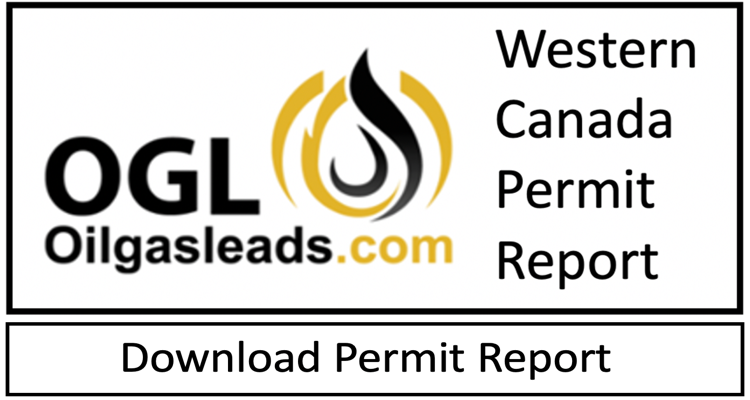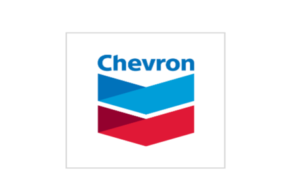Western Canada Oil Gas Permit Report March 23 2021 is a summary of 50 Operators and 73 Western Canada well, spud facility oil & gas permits approved approved last week in Western Canada last week.
Permit Summary
- Facility Permits – 11 Operators and 15 oil & gas facility permits
- Well Permits – 14 Operators and 39 oil well permits
- Wells Spud – 25 Operators and 58 spud permits
Top Operators Operators
Facility – Peyto Exploration (5), PEMBINA (1), OVINTIV CANADA ULC (1)
Well permits – CRESTWYND EXPLORATION LTD. (6), Seven Generations Energy Ltd. (5), Rolling Hills Energy (5)
Wells Spud – Crew Energy Inc. (6), Seven Generations Energy Ltd. (11), Cenovus Energy Inc. (5)
Download Western Canada Oil & Gas Permits
Oil & Gas News
Permit Summary
Oil & Gas Facility Permits Western Canada
Facilities are a system of vessels, piping, valves, tanks and other equipment that are used to gather, process, measure, store or dispose of petroleum, natural gas or water. … The upstream facility network includes equipment for the handling of oil, natural gas, natural gas liquids, and water. The table is a summary of new facility permits and facilities permits appended for upgrade to production or equipment.
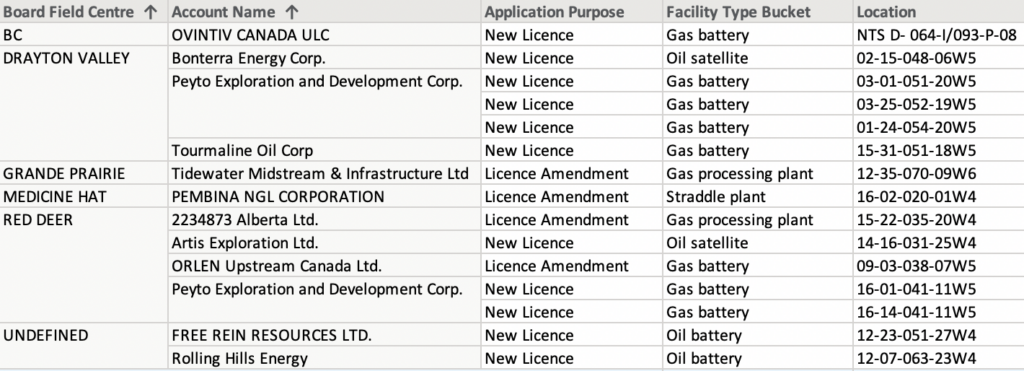
Oil & Gas Well Permits Western Canada
Well Permits Overview Status of a well identifies its current state of activity. Over the life of a typical well it will have a progression of status changes – licensed > drilling > completed > production/injection/disposal > suspended > abandoned (decommissioned). The lifespan of a well can vary, from a few years to many decades. A well may go directly from a drilling status to abandoned status if it is unsuccessful in finding oil or gas.
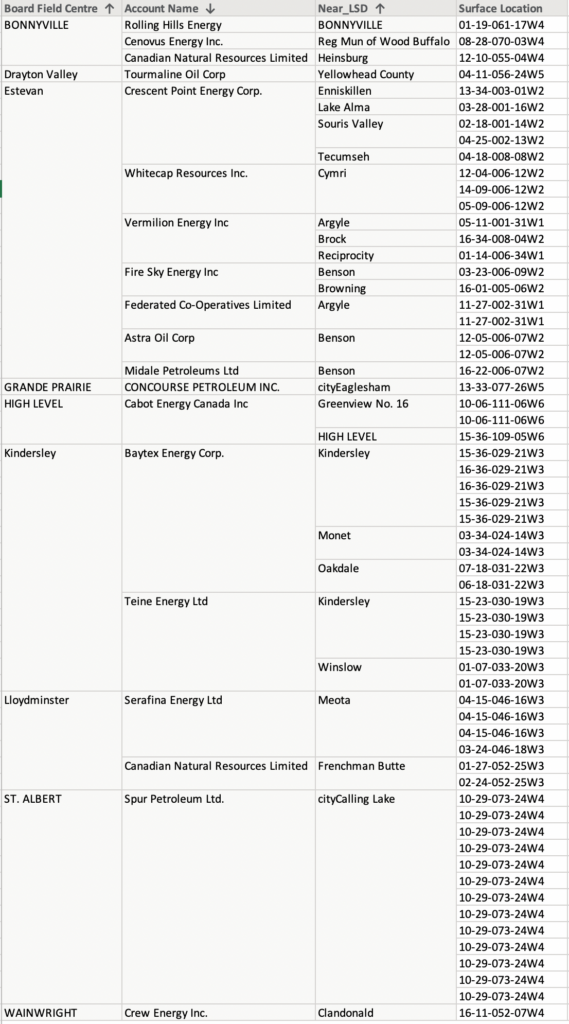
Wells Spud Permit Western Canada
Spudding is the process of beginning to drill a well in the oil and gas industry. … After the surface hole is completed, the main drill bit—which performs the task of drilling to the total depth—is inserted and this process can also be referred to as “spudding in.”
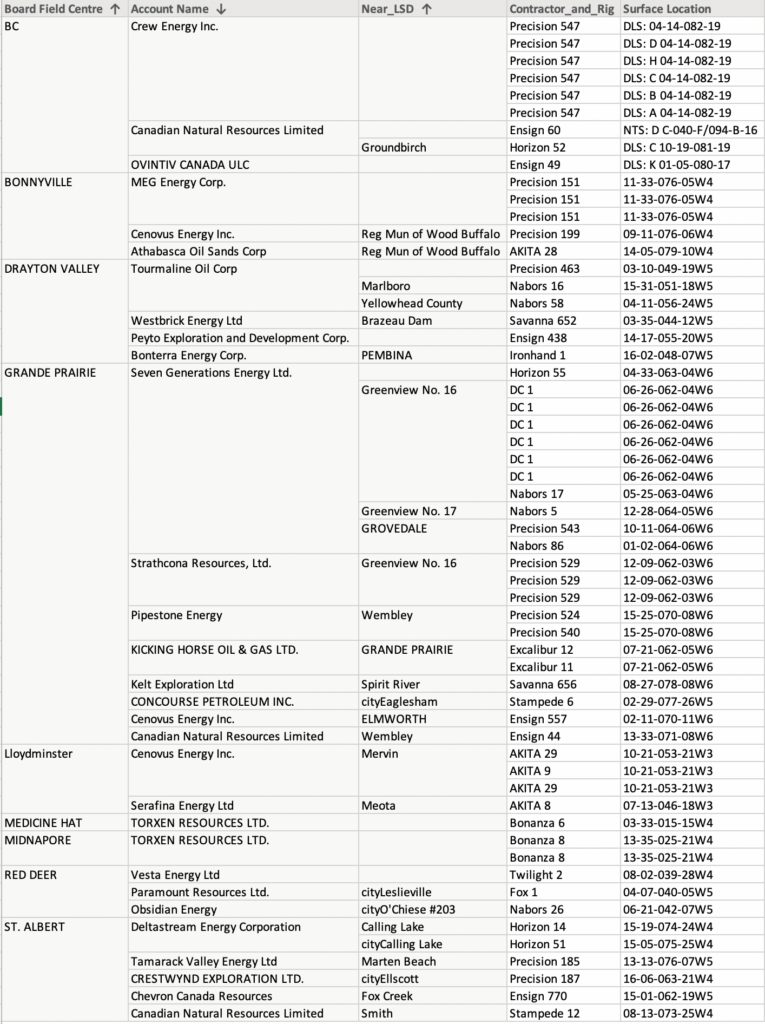
Sign-up Free Oil & Gas Permit Email
* These fields are required.
About Western Canada Sedimentary Basin
The location of the pipeline permits are the Western Canada Sedimentary Basin (WCSB) located in Western Canada including southwestern Manitoba, southern Saskatchewan, Alberta, northeastern British Columbia.
Cardium Play has been one of the largest oil fields in the Western Canada Sedimentary Basin with production history of almost six decades. … The areas with highest liquid content are Lochend and East Pembina, the highest initial production is typically encountered in Lochend, Willesden Green and Ferrier areas.
Duvernay Shale natural gas formation located in Alberta harbor 9.6 billion bbl of liquid byproducts and premium light oil. Duvernay Shale is expected to have more marketable oil resource (3.4 billion barrels) than the Bakken Formation in Saskatchewan (1.4 billion barrels) and Montney Formation in Alberta and B.C. (1.1 billion barrels). However, the Duvernay’s oil resource is much smaller than the remaining bitumen reserves in Alberta’s oil sands (165 billion barrels). The Duvernay’s marketable gas resource (76.6 Tcf) is smaller than other unconventional gas resources in the Western Canada Sedimentary Basin, such as the Montney Formation (449 Tcf), Liard Basin – (219 Tcf) and Horn River Basin (78 Tcf).
Montney Formation is a major shale gas and tight oil resource. … This estimate makes it one of the largest known gas resources in the world and equivalent to 145 years of Canada’s 2012 consumption. Gas is produced from the Montney Formation in both British Columbia and Alberta.
Oil sand is a naturally occurring mixture of sand, clay or other minerals, water and bitumen, which is a heavy and extremely viscous oil. It must be processed before it can be used by refineries to produce fuels such as gasoline and diesel.
Canada’s oil sands are found in three regions within Alberta and Saskatchewan: Athabasca, Cold Lake and Peace River, which combined cover an area more than 142,000 square kilometres (km2).

